
How to Create Swap File, Adjust Swappiness Value & Delete Swap file in Ubuntu Linux
Introduction One of the easiest ways to make your server more responsive, and guard against out-of-memory errors in your application, is to add some swap space. Swap is an area on a storage drive where the operating system can temporarily store data that it can no longer hold in memory.
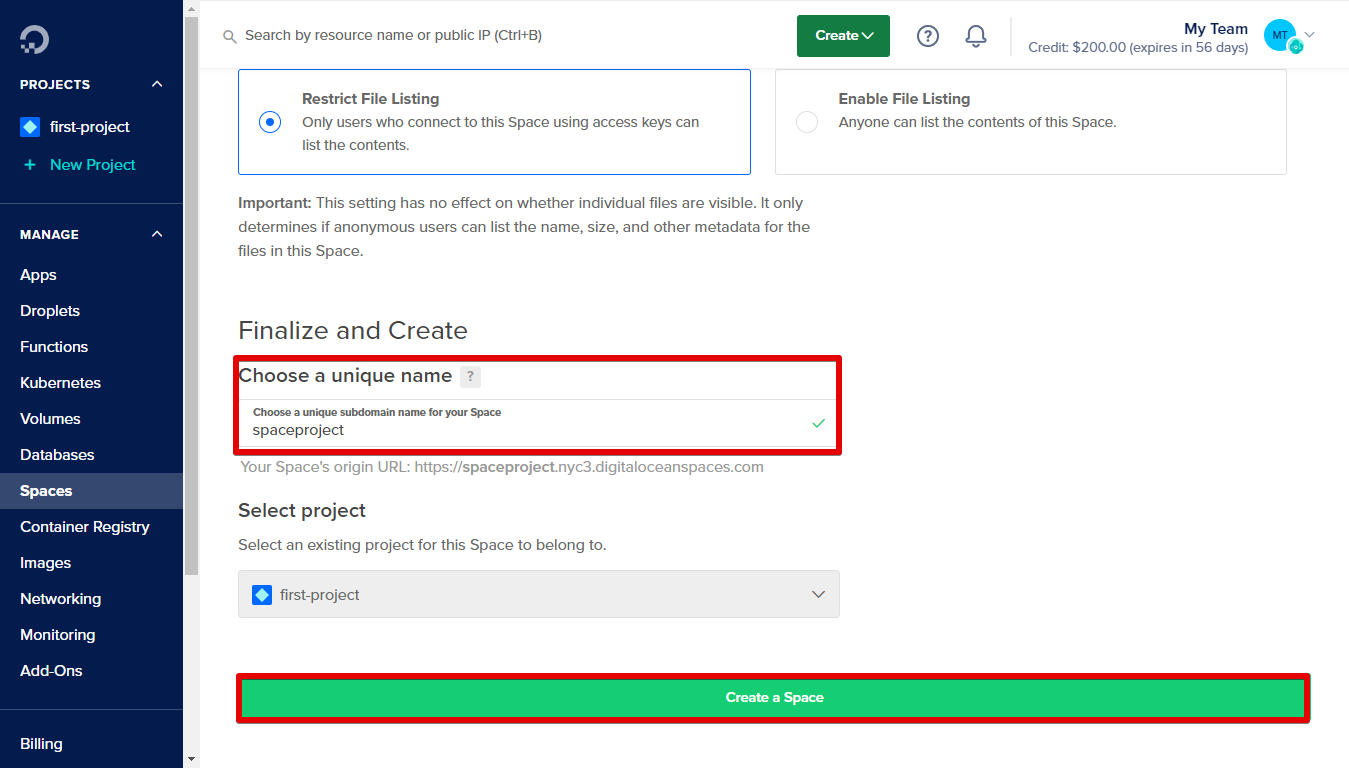
How do I upload a file to DigitalOcean droplet?
1- Use DigitalOcean's 1-Click Install DigitalOcean makes it pretty easy to initially install WordPress onto a VPS. In fact, they have a pretty easy - to - follow guide on their own website which you can read here. It's a good starting point that we don't need to rehash. A few notes, though:
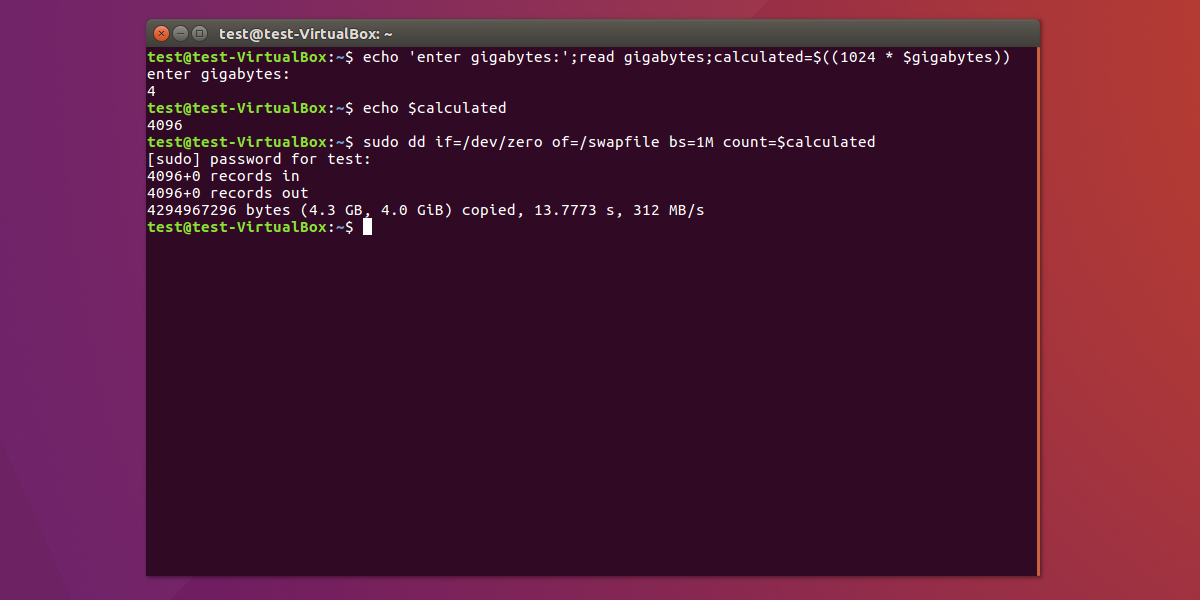
How To Set Up A Swap File On Linux
Creating a Swap File. In this example, we will create 2 GB swap file. If you want to add more swap, replace 2G with the size of the swap space you need. Complete the steps below to add swap space on Ubuntu 20.04: First, create a file that will be used as swap: sudo fallocate -l 2G /swapfile. Copy.

How to Create a Droplet from the DigitalOcean Control Panel DigitalOcean Documentation (2022)
Create swap file on digitalocean ubuntu droplets Raw. swap.sh This file contains bidirectional Unicode text that may be interpreted or compiled differently than what appears below. To review, open the file in an editor that reveals hidden Unicode characters. Learn more about bidirectional Unicode characters.

how to create and extend swap partition and swap file in linux ? part 2 swap swapon
Create Partitions The two most common partitioning systems are the traditional master boot record (MBR) format and the more modern GUID Partition Table (GPT). The MBR format has some inherent limitations, especially regarding the number and sizes of partitions that you can create. If you have no specialized needs, we recommend using GPT partitions.

How to create a swap file in GNU/Linux Tutorial MARKO NTECH
Preallocated swap files are . supported on XFS since Linux 4.18. The most portable solution to create a swap file is to use dd(1) and /dev/zero. So, although fallocate is faster, we'll use dd to create the swap file. The machine used to research this article has two GB of RAM. We're going to create a one GB swap file. The options are: if: The.

digitaloceancreatedroplet equisd
Step 1 - Checking the System for Swap Information Before we begin, we can check if the system already has some swap space available. It is possible to have multiple swap files or swap partitions, but generally one should be enough. We can see if the system has any configured swap by typing: sudo swapon --show

Discourse Memory on DigitalOcean Droplet Swap Jason Loong
How To Configure Virtual Memory (Swap File) on a VPS | DigitalOcean // Tutorial // How To Configure Virtual Memory (Swap File) on a VPS Published on November 15, 2013 Linux Basics Server Optimization By Jai Boudreau Table of Contents & Preface Introduction - Requirements and Why Pros & Cons - Droplet Check if Enabled on your VPS
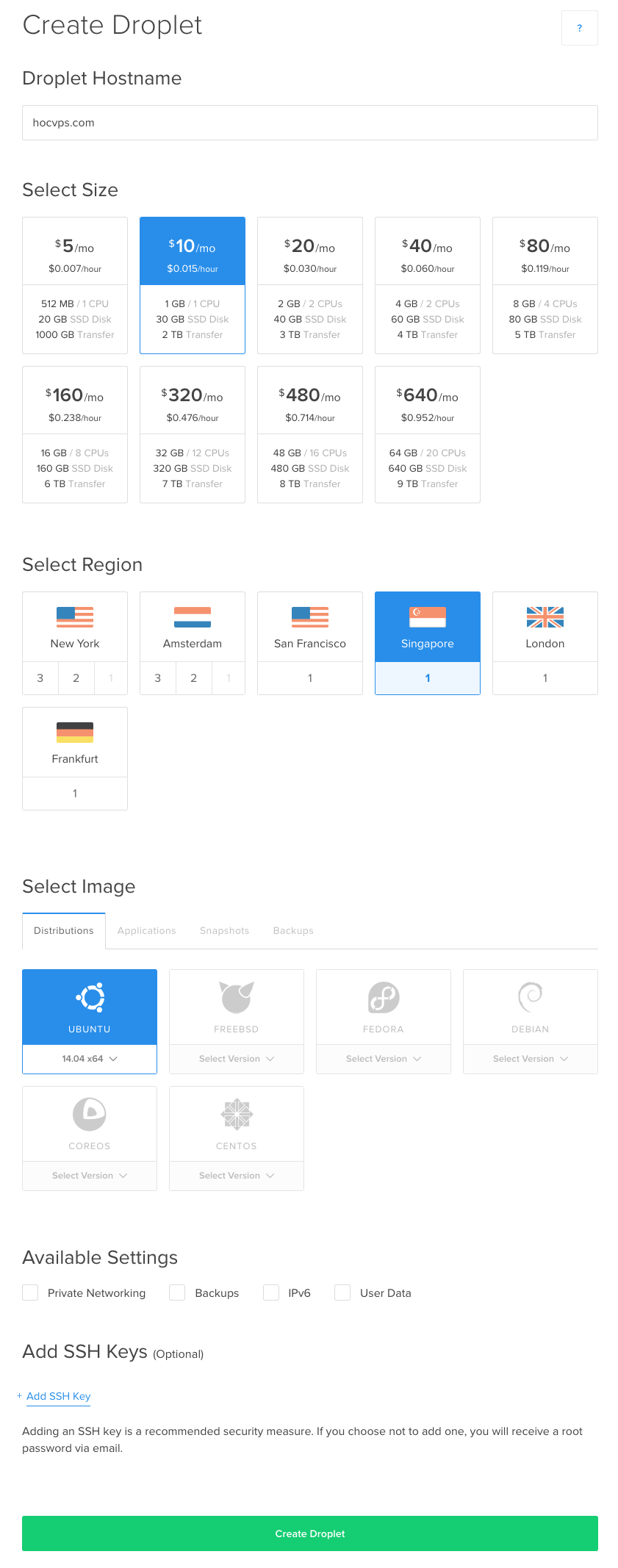
Hướng dẫn tạo VPS ở DigitalOcean Học VPS
Swap is an area on a storage drive where the operating system can temporarily store data that it can no longer hold in memory. In this guide, we will cover how to add a swap file to your server. Choose your OS below to get started. CentOS 7 How To Add Swap on CentOS 7 By Josh Barnett 6 How To Add Swap on CentOS 6 By Etel Sverdlov Debian 11

DigitalOcean Reviews 2020 Details, Pricing, & Features G2
Navigate to the File tab in the top menu and then select Site Manager. This action opens up a new prompt, where you can press the New site button in the bottom left under Select entry. Once you do this, name the site DigitalOcean and press Enter. Navigate to the General tab and press the drop-down menu for Protocol.

How to create a swap file in Linux? Linux Updates
DonaldH March 25, 2023, 5:22pm 1 There is a great tutorial for adding swap space to a server (aka "droplet") on DigitalOcean at How To Add Swap Space on Ubuntu 22.04 | DigitalOcean It essentially involves accessing the console and typing in commands, one after another:

Create a SWAP File & Partition in Linux NIX Daily
Swap is an area on a hard drive that has been designated as a place where the operating system can temporarily store data that it can no longer hold in RAM. Basically, this gives you the ability to increase the amount of information that your server can keep in its working "memory", with some caveats.

6 How to create swap file in Ubuntu Server YouTube
Creating a Swap File First, we will verify that you have available hard drive space on the system, then we can create a swap file on our filesystem. We will further allocate a file of the size that we want calling swapfile in our root ( /) directory.
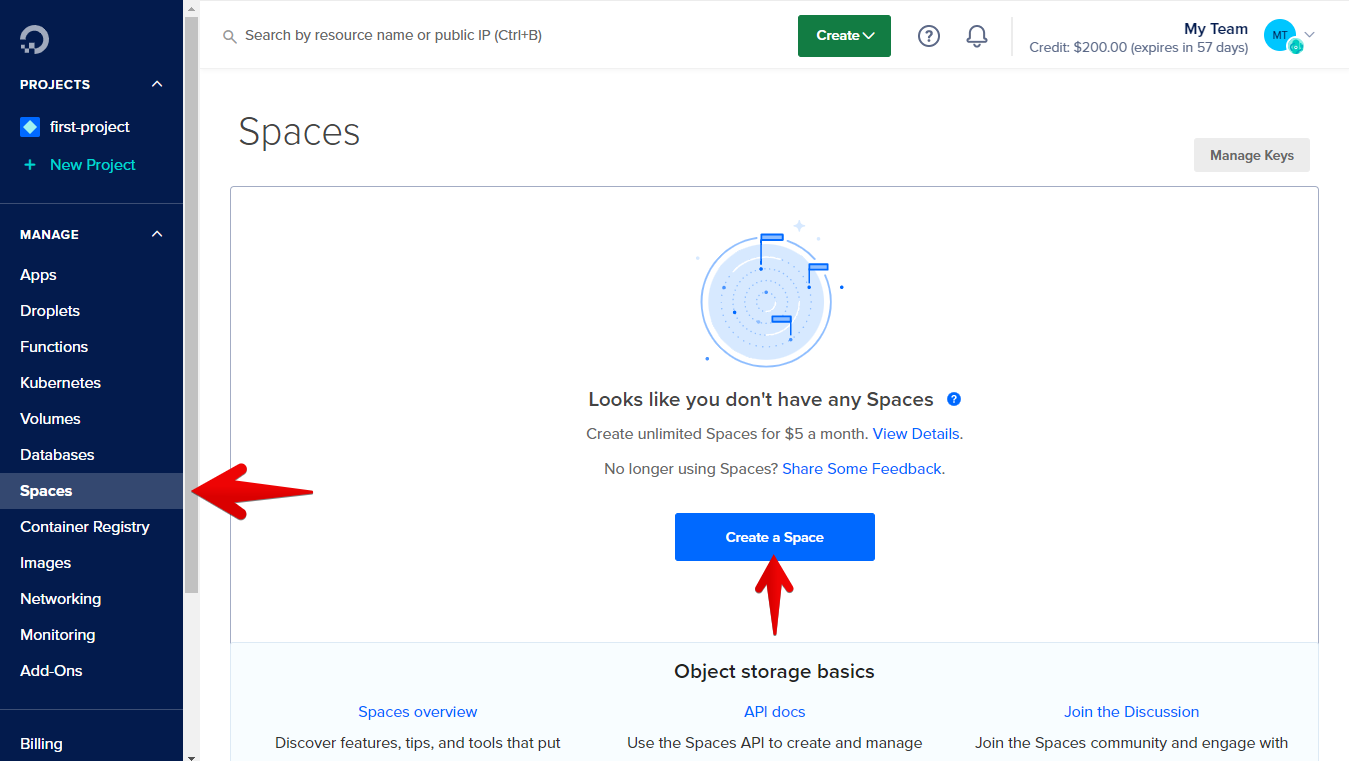
How do I upload a file to DigitalOcean droplet?
Step 1 - Checking the System for Swap Information Before we begin, we can check if the system already has some swap space available. It is possible to have multiple swap files or swap partitions, but generally one should be enough. We can see if the system has any configured swap by typing: sudo swapon --show

Create a Linux Swap File Linuxize
The Open Event Android App generator runs on a DigitalOcean. The deployment runs on a USD 10 box, that has 1 GB of RAM, but for testing I often use a USD 5 box, that has only 512mb of RAM.. The steps to create a swap file and allocating it as swap are. sudo fallocate -l 1G /swapfile sudo chmod 600 /swapfile sudo mkswap /swapfile.
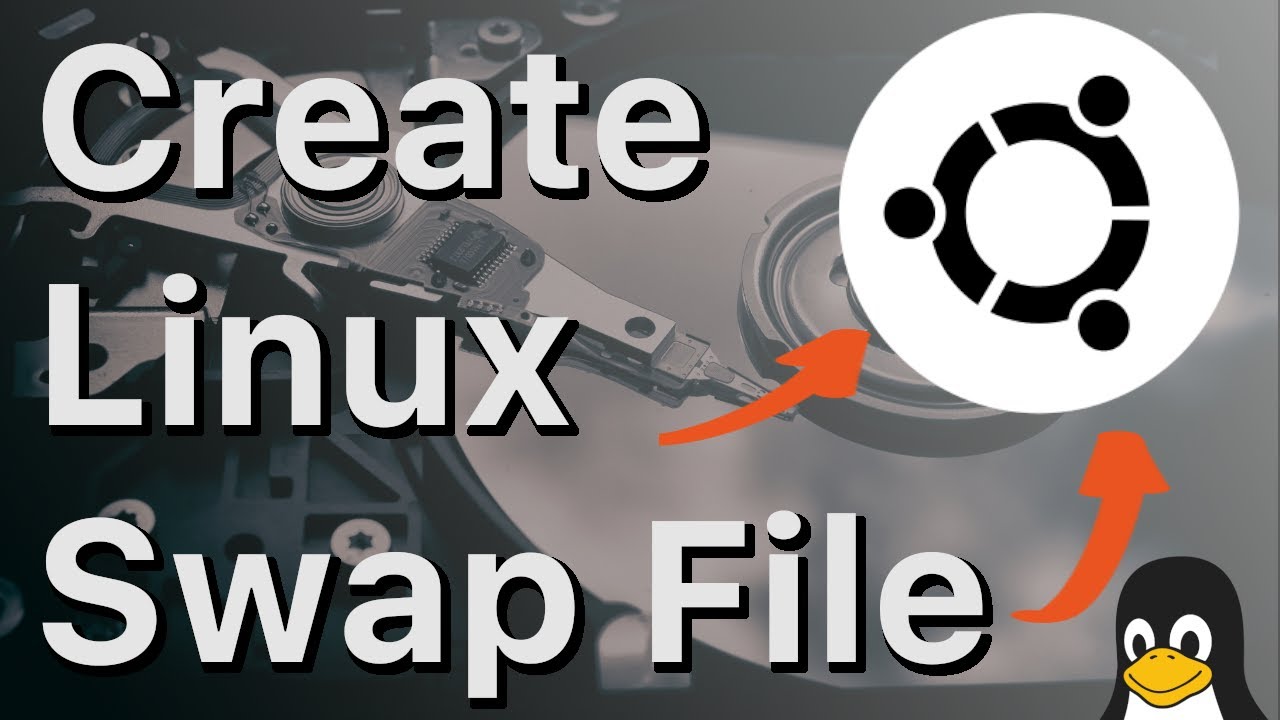
How to Create, Resize, or Extend a Linux Swap File 2020 Tutorial (Ubuntu)
Follow the below steps to create and enable Swap memory on your Ubuntu system. 1. Check Current Swap Before working make sure that the system has already swap enabled. If there is no swap, you will get the output header only. ADVERTISEMENT sudo swapon -s 2. Create Swap File Let's create a file to use for swapping in the system of the required size.